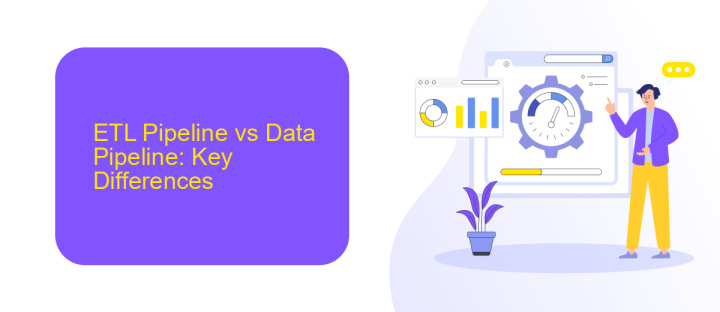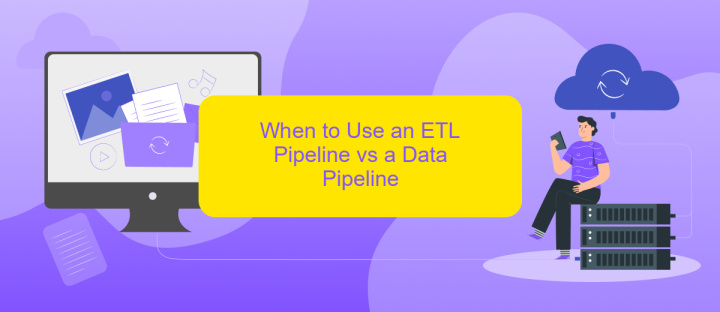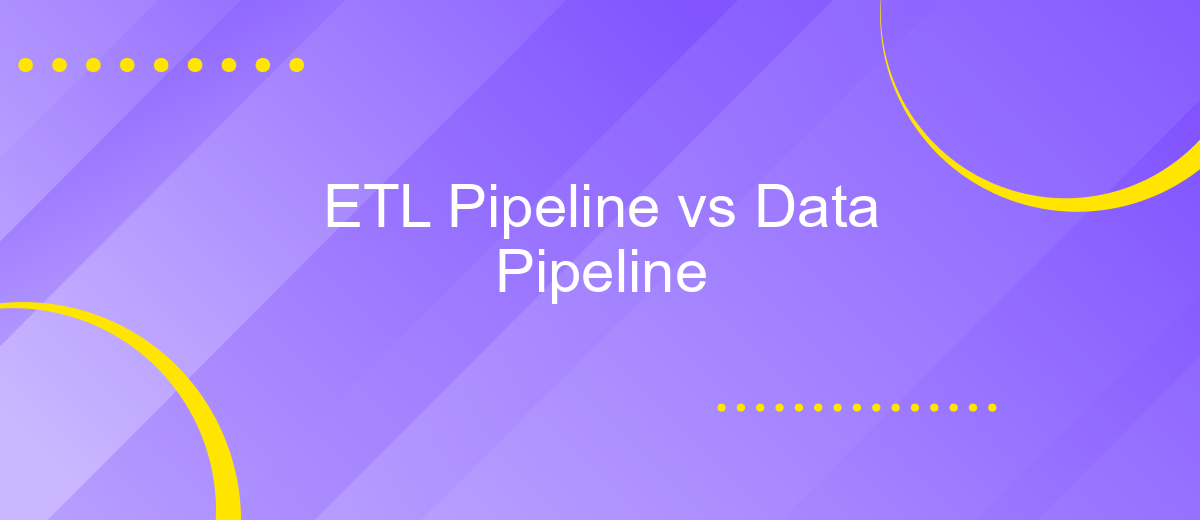ETL Pipeline vs Data Pipeline
In the realm of data management, understanding the distinctions between ETL (Extract, Transform, Load) pipelines and data pipelines is crucial. Both play pivotal roles in the processing and movement of data, yet they serve different purposes and functionalities. This article delves into their unique characteristics, benefits, and use cases to help you determine which pipeline best suits your needs.
Introduction
In today's data-driven world, understanding the differences between ETL pipelines and data pipelines is crucial for efficient data management. Both play pivotal roles in the extraction, transformation, and loading of data, but they serve distinct purposes and use cases. Knowing when to use each can significantly impact the effectiveness of your data operations.
- ETL Pipeline: Primarily focuses on extracting data from various sources, transforming it into a suitable format, and loading it into a data warehouse.
- Data Pipeline: Encompasses a broader range of data processing tasks, including real-time data streaming, batch processing, and data integration.
Choosing the right pipeline depends on your specific requirements. For instance, if you need to integrate multiple data sources quickly and efficiently, services like ApiX-Drive can simplify the process. ApiX-Drive offers seamless integration capabilities, allowing you to automate data workflows and ensure that your data is always up-to-date and accurate. Understanding these differences will help you make informed decisions and optimize your data strategy.
ETL Pipeline vs Data Pipeline: Key Differences

ETL (Extract, Transform, Load) pipelines and data pipelines serve distinct purposes in data management. ETL pipelines focus on extracting data from various sources, transforming it into a suitable format, and loading it into a target system, typically a data warehouse. This process is crucial for data integration, enabling businesses to consolidate data from multiple sources for in-depth analysis. ETL pipelines are often batch-oriented, processing data at scheduled intervals, which makes them ideal for handling large volumes of data that do not require real-time processing.
In contrast, data pipelines encompass a broader range of data movement processes, including real-time data streaming and batch processing. They are designed to handle diverse data integration tasks beyond the traditional ETL scope, such as data migration, replication, and real-time analytics. Services like ApiX-Drive can simplify the setup of these pipelines by providing automated integration solutions, allowing businesses to connect various applications and data sources seamlessly. This flexibility makes data pipelines more versatile, catering to dynamic data needs and supporting real-time decision-making processes.
When to Use an ETL Pipeline vs a Data Pipeline

Choosing between an ETL pipeline and a data pipeline depends on your specific data processing needs. ETL (Extract, Transform, Load) pipelines are ideal when you need to extract data from multiple sources, transform it into a consistent format, and load it into a data warehouse for analysis. This is particularly useful for businesses that require complex data transformations and centralized data storage.
- If your data requires significant transformation before analysis, an ETL pipeline is the best choice.
- When you need to integrate data from various sources into a single, cohesive dataset, opt for an ETL pipeline.
- If your goal is real-time data processing with minimal transformation, a data pipeline is more suitable.
- For continuous data flow without storing it in a centralized location, a data pipeline is preferred.
For setting up integrations and automating data workflows, services like ApiX-Drive can be extremely helpful. ApiX-Drive allows you to connect various applications and automate data transfer processes, making it easier to manage both ETL and data pipelines effectively. By using such tools, you can streamline your data operations and focus on deriving insights rather than managing data flow intricacies.
Benefits of Using ETL and Data Pipelines

ETL (Extract, Transform, Load) and data pipelines are essential components in modern data management strategies. They enable organizations to efficiently process and manage large volumes of data, ensuring the data is clean, accurate, and readily available for analysis and decision-making.
One of the primary benefits of using ETL and data pipelines is their ability to automate the data integration process. This automation reduces the time and effort required to manually handle data, allowing teams to focus on more strategic tasks. Moreover, tools like ApiX-Drive facilitate seamless integration between various data sources and destinations, further streamlining the process.
- Improved data quality and consistency
- Enhanced decision-making capabilities
- Scalability to handle growing data volumes
- Time and cost efficiency through automation
- Seamless integration with various data sources and destinations
In conclusion, leveraging ETL and data pipelines provides organizations with a robust framework for managing their data effectively. By utilizing tools like ApiX-Drive, businesses can ensure their data integration processes are efficient and reliable, ultimately driving better business outcomes.
Conclusion
In conclusion, both ETL pipelines and data pipelines play crucial roles in the data management landscape. ETL pipelines are specifically designed for extracting, transforming, and loading data, making them ideal for structured data processing and integration into data warehouses. On the other hand, data pipelines offer a more flexible approach, capable of handling diverse data types and real-time processing, which is essential for modern data analytics and machine learning applications.
When selecting between ETL and data pipelines, it's important to consider the specific needs of your organization, including data volume, complexity, and the required processing speed. Tools like ApiX-Drive can significantly simplify the integration process by automating data flows between various applications and services, ensuring seamless and efficient data management. Ultimately, the right choice will depend on your unique requirements and the goals you aim to achieve with your data strategy.
FAQ
What is the difference between an ETL pipeline and a data pipeline?
When should I use an ETL pipeline instead of a data pipeline?
Can ETL pipelines handle real-time data processing?
What tools can I use to automate and integrate ETL and data pipelines?
How do I ensure data quality in my ETL or data pipeline?
Apix-Drive is a simple and efficient system connector that will help you automate routine tasks and optimize business processes. You can save time and money, direct these resources to more important purposes. Test ApiX-Drive and make sure that this tool will relieve your employees and after 5 minutes of settings your business will start working faster.

